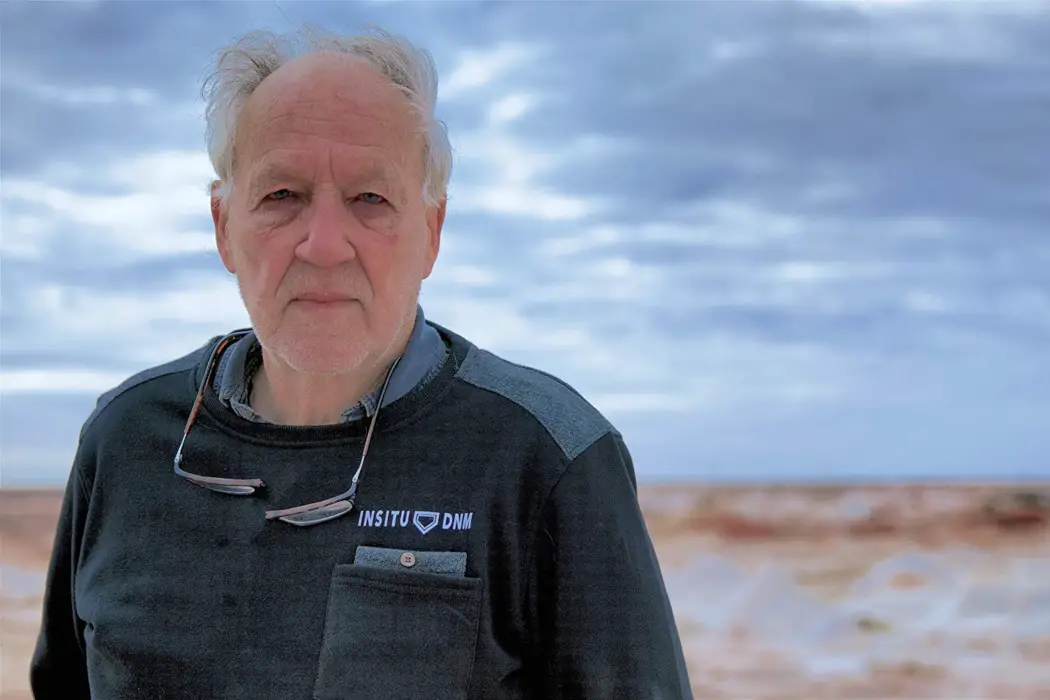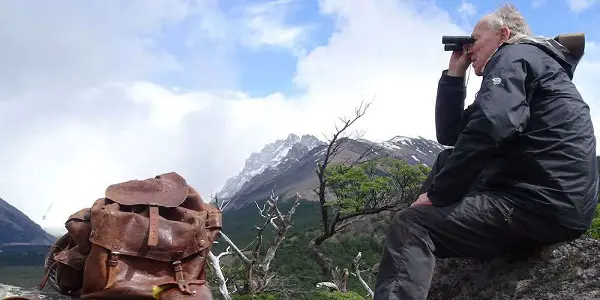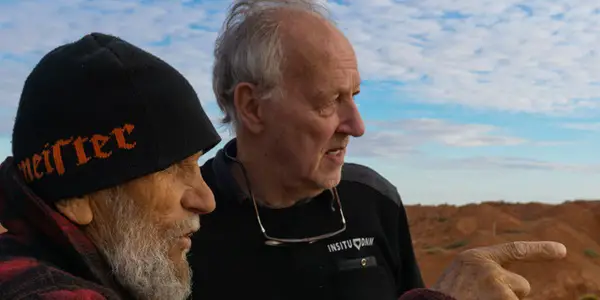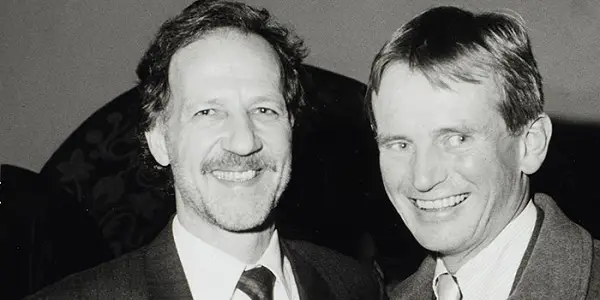NOMAD: IN THE FOOTSTEPS OF BRUCE CHATWIN: Herzog’s Most Personal Character Study

Musanna Ahmed is a freelance film critic writing for Film…
Werner Herzog traces the footsteps of his late, great friend, the writer and traveler Bruce Chatwin, in his highly personal and compelling documentary Nomad: In the Footsteps of Bruce Chatwin. “Wild characters, strange dreamers and big ideas about the nature of human existence, these were the themes that Chatwin was obsessed with”, speaks Herzog of his friend’s work.
He forgets to mention dinosaurs – this series of encounters, inspired by Chatwin’s travels, is a goldmine of awe for paleontologists.
Novelistic view of a novelist
Chatwin is probably one of the most difficult characters Herzog has ever had to examine from an audience’s perspective. The esteemed documentarian typically trains his lens on subjects we have a basic understanding of – the internet, volcanoes, Antarctica – but Bruce Chatwin has a very unique outlook on the nature of human existence with highly specific interests, like the songs of Indigenous Australians that are basis of his book The Songlines.

Chatwin’s perspective isn’t the easiest to understand without a little bit of hand-holding by Herzog, who offers it to us at the bare minimum by giving each chapter of the divided, novelistic structure to breathe and let us coalesce the themes running through the writer’s bibliography. It clearly means a lot to him to undertake this journey, and Herzog‘s self-guided approach isn’t going to be accessible to everyone.
Spoken passages from the writer’s books help acquaint us with his gorgeous prose, particularly the influential In Patagonia which put the sparsely populated titular South American territory on the radar of so many travelers, some of whom we see in their tourist element through Herzog’s contemporary footage exploring the cave that was a key focus of Chatwin’s venture there.
Herzogian insights via the distinctive Herzogian style
As expected from the director, he invites us to share his experience through the power of cinema, looking at the imprints on the cave from the long-gone tribes in the southernmost part of the continent and saying that they become more mysterious as we stare at them.

I’m sure all of us would take guidance when listening to narration from that distinctive larynx, so, almost by default, Herzog proceeds to still his frames and underscore his images with elegant pieces composed by frequent collaborator Ernst Reijseger.
Chatwin was also drawn to inclined landscapes, wherein he found a spiritual connection. He was a fan of Herzog’s acclaimed debut feature Signs of Life and cited a scene in which the central soldier saw a field of 10,000 windmills as a particularly key influence. The two swapped roles of inspiration when Herzog adapted his friend’s 1980 novel The Viceroy of Ouidah into the Klaus Kinski-starrer Cobra Verde.
Nomad: In the Footsteps of Bruce Chatwin: Conclusion
This personal tether between filmmaker and subject is something Herzog is used to – think Little Dieter Needs to Fly or the Kinski-focused My Best Fiend – but I found it to be also the reason for why Nomad is harder to examine. Nobody has a better grasp on Bruce Chatwin than Werner Herzog, whose access includes a bittersweet interview with his widow Elizabeth Chanler, and this history between the two makes Nomad a work of personal catharsis for himself more so than an informative documentary for us.

Stylistically, it is fairly standard Herzog, but that standard is higher than most filmmakers’ efforts anyway. As best as it may be for fans of the late author who at least have some prerequisite knowledge having read his books, I would also recommend Nomad to anyone who needs their fix of Herzogian character study as he converses with fascinating individuals and bears witness to more of the world’s visual wonder when following the footsteps of Bruce Chatwin.
What is your favourite book by Bruce Chatwin or your favourite documentary by Werner Herzog? Let us know in the comments below.
Nomad: In the Footsteps of Bruce Chatwin was released at the 2019 Tribeca Film Festival. It does not yet have a release date as of this writing.
Does content like this matter to you?
Become a Member and support film journalism. Unlock access to all of Film Inquiry`s great articles. Join a community of like-minded readers who are passionate about cinema - get access to our private members Network, give back to independent filmmakers, and more.
Musanna Ahmed is a freelance film critic writing for Film Inquiry, The Movie Waffler and The Upcoming. His taste in film knows no boundaries.













